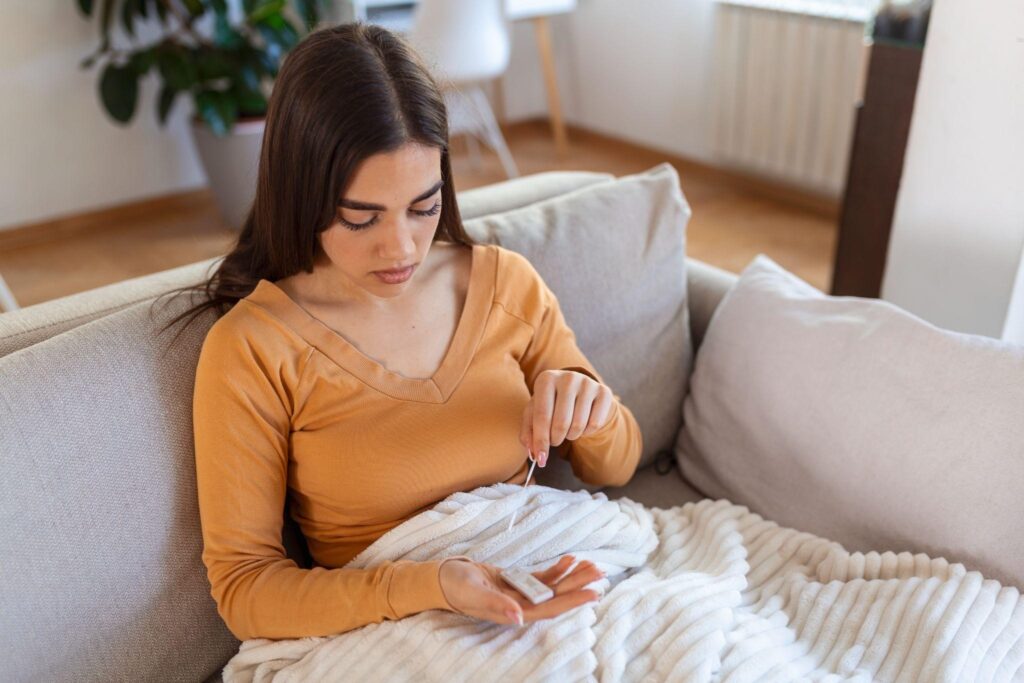Last updated on June 30th, 2025 at 06:33 pm
 Checking for pregnancy at home has become a common practice for women seeking convenience and privacy in determining their reproductive status. With the availability of over-the-counter home pregnancy test kits, the process has become straightforward and accessible. These tests rely on detecting the presence of human chorionic gonadotropin (hCG), a hormone produced by the placenta shortly after conception.
Checking for pregnancy at home has become a common practice for women seeking convenience and privacy in determining their reproductive status. With the availability of over-the-counter home pregnancy test kits, the process has become straightforward and accessible. These tests rely on detecting the presence of human chorionic gonadotropin (hCG), a hormone produced by the placenta shortly after conception.
Home pregnancy tests (HPTs) are designed to detect the presence of human chorionic gonadotropin (hCG), a hormone produced by the placenta shortly after a fertilized egg attaches to the uterine lining. Most HPTs are urine-based and come in various formats, including strips, midstream, and digital tests.
When to Take a Home Pregnancy Test?
The ideal time to take a home pregnancy test largely depends on the sensitivity of the test and your menstrual cycle. However, most tests recommend waiting until you’ve missed your period for the most accurate results.
Some highly sensitive tests may be able to detect hCG levels even before your missed period, but it’s essential to follow the instructions carefully for reliable results.
How to take a Home Pregnancy Test?
Read the instructions carefully: Each home pregnancy test kit comes with specific instructions for use. Please ensure you thoroughly read and comprehend these guidelines before continuing.
Collect a urine sample: Use a clean, dry container to collect your urine sample. Most tests recommend using the first urine of the day, as it tends to have the highest concentration of hCG.
Perform the test: Depending on the type of test you’re using, you’ll either need to dip the test strip into the urine sample or hold the test stick under a stream of urine. Follow the instructions provided with your test kit for the correct procedure.
Wait for the results: Most home pregnancy tests provide results within a few minutes. Avoid interpreting the results too early or too late, as this can lead to inaccurate readings.
Interpret the results: Results are typically indicated by lines, symbols, or words. A positive result usually indicates pregnancy, while a negative result suggests that you’re not pregnant. In some cases, a test may produce an invalid result due to user error or a faulty test kit.

Natural ways to Check Pregnancy at Home
Checking for pregnancy at home doesn’t always have to involve commercial test kits. Several natural methods can provide clues about pregnancy. While these methods are not as definitive as medical tests, they can offer initial indications worth exploring further. Here are some natural ways to check for pregnancy at home:
Basal Body Temperature (BBT) Tracking
Basal body temperature refers to your body’s temperature at rest, typically measured first thing in the morning before any activity.
A sustained increase in basal body temperature over several days may indicate pregnancy, as it often remains elevated after ovulation when an embryo implants in the uterus.
Observing Cervical Mucus Changes
Changes in cervical mucus can provide insights into fertility and ovulation.
Following ovulation, cervical mucus tends to become thick, sticky, and less abundant. However, if you’re pregnant, cervical mucus may remain abundant and have a thicker consistency due to increased blood flow to the cervix.
Pregnancy Symptom Monitoring
Pay attention to early pregnancy symptoms such as fatigue, nausea, breast tenderness, frequent urination, and heightened sense of smell.
While these symptoms are not exclusive to pregnancy and can mimic premenstrual symptoms, experiencing several of them together might warrant further investigation.
DIY Pregnancy Tests
While not as reliable as commercial tests, homemade pregnancy tests using household ingredients like sugar, toothpaste, or vinegar have been used by some individuals.
These tests involve mixing urine with the designated substance and observing any changes, such as color or fizzing. However, their accuracy is questionable, and they should not be solely relied upon for confirmation.
Observing Physical Changes
Changes in the appearance of the breasts, such as darkening of the nipples, enlargement, or increased sensitivity, can sometimes indicate pregnancy.
Some individuals may also notice changes in skin appearance, such as the development of a linea nigra (a dark vertical line on the abdomen) or the appearance of stretch marks.
Medical Termination of Pregnancy (MTP):
If your pregnancy test result is positive and you are considering options for medical termination (after medical consultation), medications like Misoprost 200 mcg Tablet are sometimes prescribed by doctors. This medicine contains Misoprostol, which is used under medical supervision for early-stage medical abortion. Do not self-medicate. Always consult a qualified gynecologist before using any such medication.

> Consult a Doctor and Medkart will help you Order Medicines Online
Conclusion:
Home pregnancy testing offers a convenient and reliable way to confirm pregnancy in the comfort of your own home. By understanding how these tests work and following the instructions carefully, you can obtain accurate results quickly and easily.
While natural methods of checking for pregnancy at home can provide preliminary indications, they are not as reliable as medical tests. If you suspect you may be pregnant based on these methods, it’s essential to confirm the pregnancy with a medical professional through urine or blood tests. Additionally, early prenatal care is crucial for the health and well-being of both the mother and the developing baby.
Read: What are Generic Medicines?
FAQs on How to check Pregnancy at Home
Q1. How to check pregnancy at home?
To check for pregnancy at home, use a urine-based home pregnancy test kit. Collect a urine sample and follow the instructions to perform the test, typically by dipping a test strip or holding a test stick in the urine. Wait for the indicated time, usually a few minutes, and interpret the results based on the appearance of lines, symbols, or words provided by the test.
Q2. How soon can I take a home pregnancy test after a missed period?
Most home pregnancy tests recommend waiting at least a week after your missed period for accurate results. However, some highly sensitive tests may detect pregnancy hormone (hCG) levels a few days before your expected period.
Q3. What time of day is best to take a home pregnancy test?
The first urine of the day, typically upon waking, is the most concentrated and ideal for testing as it contains higher levels of pregnancy hormone (hCG). However, you can take a test at any time of day, ensuring you haven’t consumed excessive liquids beforehand for accurate results.
Related Links:
- Home Remedies for Stomach Pain
- Danger Level of SGPT and SGOT
- Diet Chart for Weight Loss for Female
- Diet Chart for Diabetic Patient
- How to Increase Platelet Count?
- How to get Rid of Pimples?
- How to get Rid of Dandruff?
- How much Water should you drink every day?
- International Epilepsy Day
- World Cancer Day
- How to get Periods immediately?
